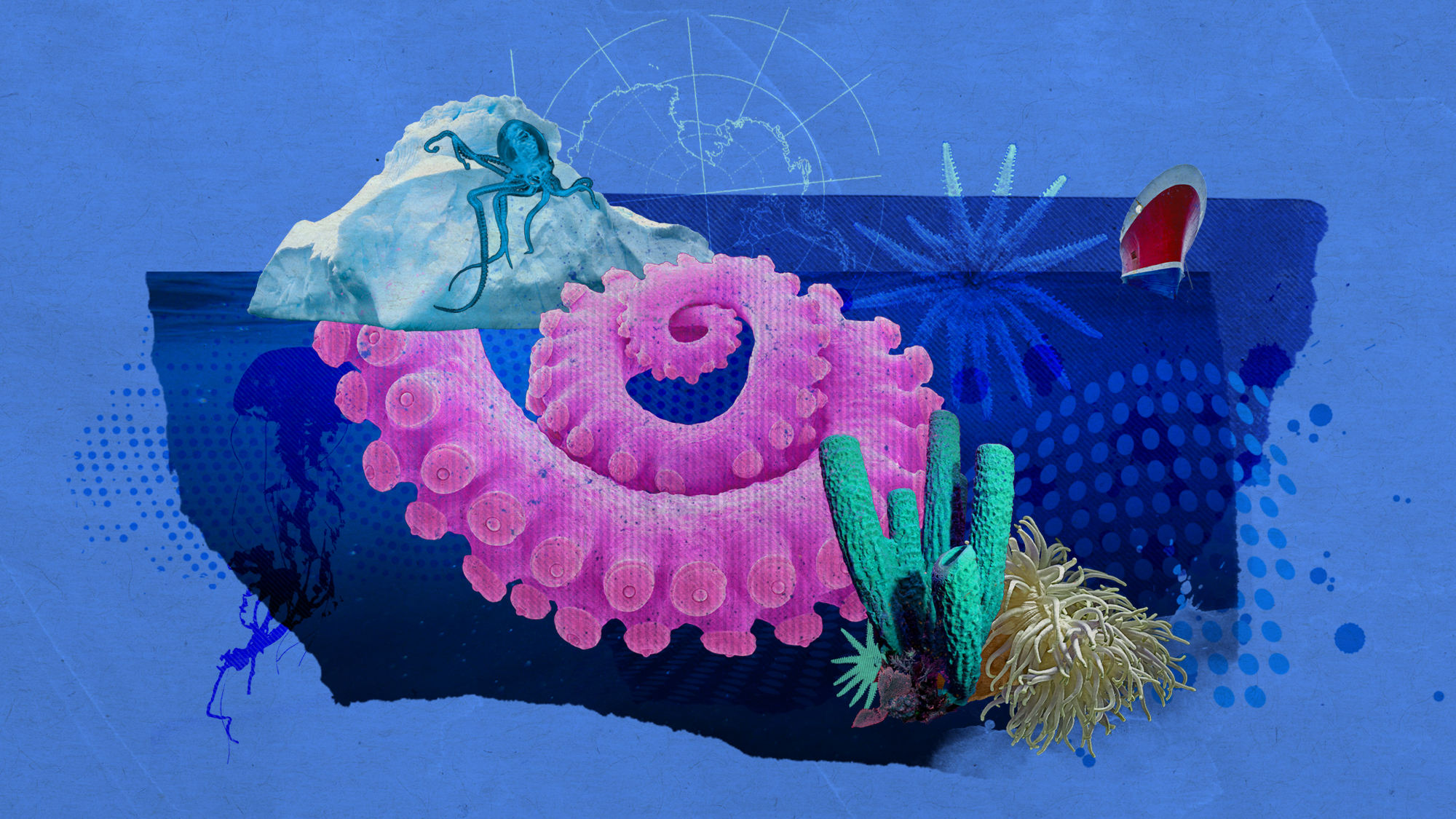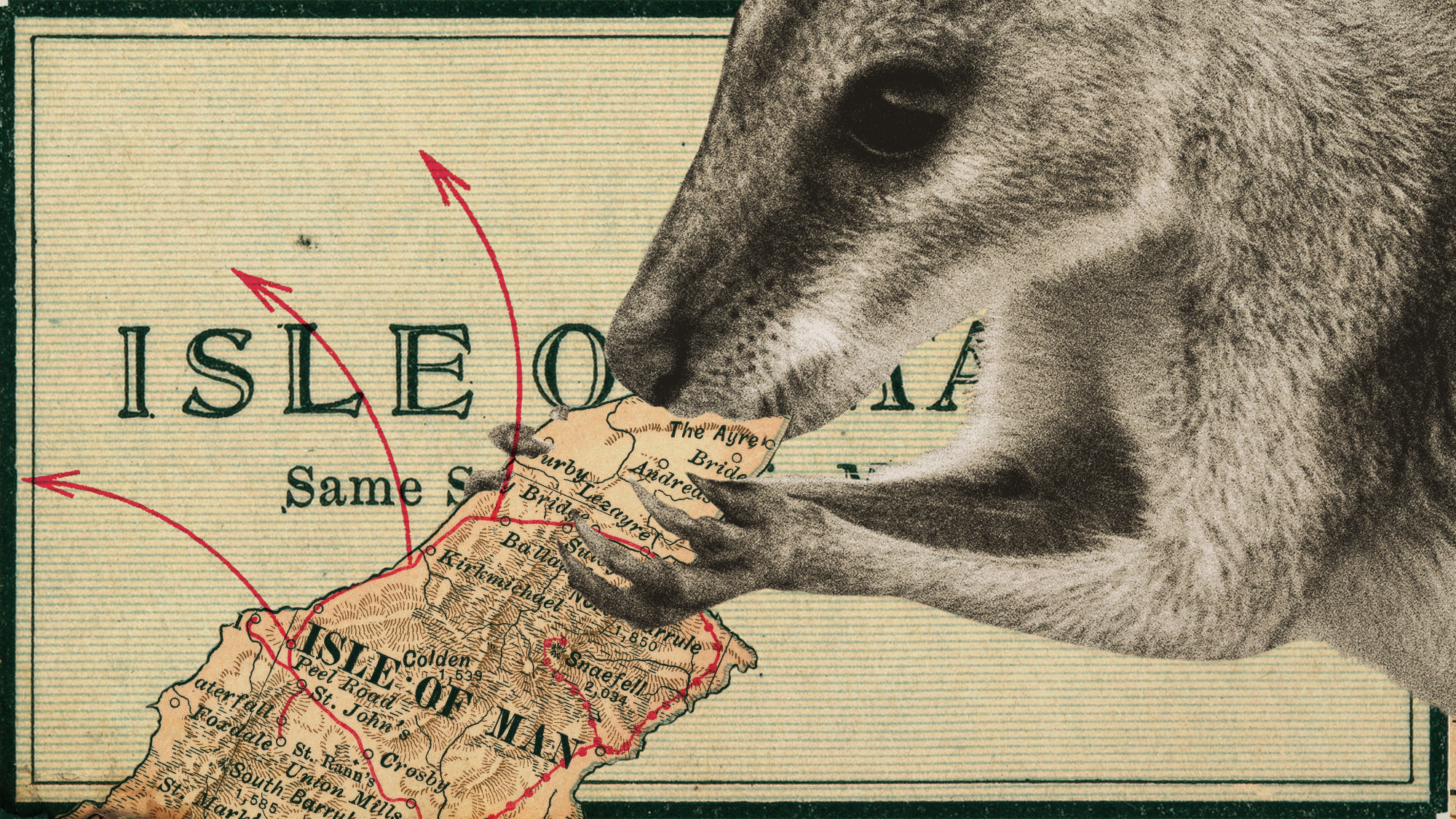Dozens of deep-sea creatures discovered after iceberg broke off Antarctica
The cold never bothered them anyway


Beneath a giant iceberg, a whole ecosystem never seen before. Iceberg A-84 broke off from Antarctica and revealed a thriving community of sea creatures underneath. Now, researchers are curious as to how these species have survived. Fracturing icebergs are only going to become more common as climate change worsens, metaphorically thawing a whole field of research in the process.
Breaking the ice
An iceberg the size of Chicago broke away from the George VI Ice Shelf on January 13, 2025. This allowed researchers aboard the Schmidt Ocean Institute's R/V Falkor (too) to investigate what lived on the seafloor under the broken piece. "We seized upon the moment, changed our expedition plan and went for it so we could look at what was happening in the depths below," Dr. Patricia Esquete, the expedition cochief scientist, said in a statement.
The experts identified more than 70 new species, "including squat lobsters and marine snails that were completely new to science," said The Washington Post. "There was a sense of going into a complete unknown," Sasha Montelli of University College London, also a cochief scientist, said to Scientific American. "We thought we might see some life there, but it was really surprising to see the degree to which life was thriving in such a hostile environment. And it wasn't just existing there but had apparently been sustained for a very long time." Based on the size of the communities of species, the researchers estimate that the ecosystem may have been around for decades or even hundreds of years. Lab research is still required to determine whether any of the species are new.
The Week
Escape your echo chamber. Get the facts behind the news, plus analysis from multiple perspectives.

Sign up for The Week's Free Newsletters
From our morning news briefing to a weekly Good News Newsletter, get the best of The Week delivered directly to your inbox.
From our morning news briefing to a weekly Good News Newsletter, get the best of The Week delivered directly to your inbox.
4,265 feet under the sea
To discover the marine ecosystem, the researchers used a remotely operated vehicle, ROV SuBastian, to explore 4,265 feet below the surface of the ocean. "Normally, deep-sea ecosystems get their nutrients from the sea surface, which sprinkle down toward the seafloor," said National Geographic. "But this area was covered by a 500-foot-thick icy roof for an interminable amount of time, meaning that these critters must be getting their nutrients another way." The question remains as to how a thriving underwater ecosystem can exist in such conditions.
One of the theories is that "these lifeforms may derive their energy from ocean currents, which sweep nutrients beneath the ice sheet to sustain the ecosystem," said IFL Science. This is still an active area of scientific research. What is even more uncertain is "how this vibrant ecosystem will fare now that the iceberg has broken away," said Scientific American. "Many deep-sea dwellers are adapted to unchanging conditions found in their environment, so they are highly sensitive to even small environmental shifts."
Warming temperatures due to climate change is causing the Antarctic ice sheet to melt, making it a "major contributor to sea level rise worldwide," Montelli said in the statement. "Our work is critical for providing longer-term context of these recent changes, improving our ability to make projections of future change — projections that can inform actionable policies."
A free daily email with the biggest news stories of the day – and the best features from TheWeek.com
Devika Rao has worked as a staff writer at The Week since 2022, covering science, the environment, climate and business. She previously worked as a policy associate for a nonprofit organization advocating for environmental action from a business perspective.
-
 Crest falling: Mount Rainier and 4 other mountains are losing height
Crest falling: Mount Rainier and 4 other mountains are losing heightUnder the radar Its peak elevation is approximately 20 feet lower than it once was
-
 Death toll from Southeast Asia storms tops 1,000
Death toll from Southeast Asia storms tops 1,000speed read Catastrophic floods and landslides have struck Sri Lanka, Indonesia, Thailand and Malaysia
-
 Can for-profit geoengineering put a pause on climate change?
Can for-profit geoengineering put a pause on climate change?In the Spotlight Stardust Solutions wants to dim the sun. Scientists are worried.
-
 How will climate change affect the UK?
How will climate change affect the UK?The Explainer Met Office projections show the UK getting substantially warmer and wetter – with more extreme weather events
-
 Can the UK do more on climate change?
Can the UK do more on climate change?Today's Big Question Labour has shown leadership in the face of fraying international consensus, but must show the public their green mission is ‘a net benefit, not a net cost’
-
 The UK’s surprising ‘wallaby boom’
The UK’s surprising ‘wallaby boom’Under the Radar The Australian marsupial has ‘colonised’ the Isle of Man and is now making regular appearances on the UK mainland
-
 Did Cop30 fulfil its promise to Indigenous Brazilians?
Did Cop30 fulfil its promise to Indigenous Brazilians?Today’s Big Question Brazilian president approves 10 new protected territories, following ‘unprecedented’ Indigenous presence at conference, both as delegates and protesters
-
 Can the world adapt to climate change?
Can the world adapt to climate change?Today's Big Question As the world gets hotter, COP30 leaders consider resilience efforts



